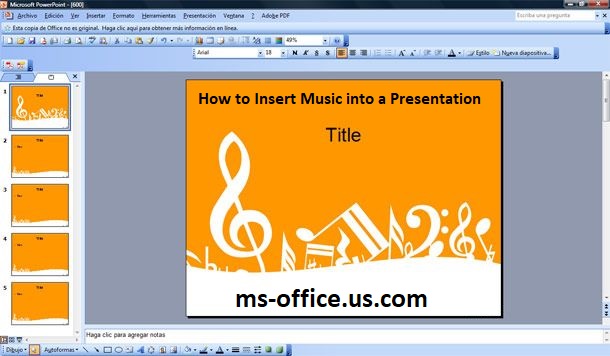How to Create A Microsoft Excel Simple Formulas
Introduction of Excel
Excel: one among the foremost powerful features in Excel is that the ability to calculate numerical information using formulas. Just like a calculator, Excel can add, subtract, multiply, and divide. In this lesson, we’ll show you ways to use cell references to make simple formulas. See www.ofiice.com/setup
Mathematical operators
Excel uses standard operators for formulas, like a sign for addition (+), a sign for subtraction (–), an asterisk for multiplication (*), a forward slash for division (/), and a caret (^) for exponents.
All formulas in Excel must begin with an sign (=). This is because the cell contains, or is adequate to , the formula and therefore the value it calculates.
read also>>> New One Drive Feature Across Microsoft 365:
Understanding cell references
While you'll create simple formulas in Excel manually (for example, =2+2 or =5*5), most of the time you'll use cell addresses to make a formula. This is known as making a cell reference. Using cell references will make sure that your formulas are always accurate because you'll change the worth of referenced cells without having to rewrite the formula.
By combining a mathematical operator with cell references, you'll create a spread of straightforward formulas in Excel. Formulas also can include a mixture of cell references and numbers, as within the examples below:
Introduction of Excel
In our example below, we’ll use an easy formula and cell references to calculate a budget.
- Select the cell that will contain the formula. In our example, we’ll select cell B3.
- Type the equals sign (=). Notice how it appears in both the cell and therefore the formula bar.
- Type the cell address of the cell you want to reference first in the formula: cell B1 in our example. A blue border will appear round the referenced cell.
- Type the mathematical operator you want to use. In our example, we’ll type the addition sign (+).
- Type the cell address of the cell you want to reference second in the formula: cell B2 in our example. A red border will appear round the referenced cell.
- Press Enter on your keyboard. The formula are going to be calculated, and therefore the value are going to be displayed within the cell.
If the results of a formula is just too large to be displayed during a cell, it's going to appear as pound signs (#######) rather than a worth . This means the column isn't wide enough to display the cell content. Simply increase the column width to point out the cell content.
Modifying values with cell references
The true advantage of cell references is that they permit you to update data in your worksheet without having to rewrite formulas. In the example below, we’ve modified the value of cell B1 from $1,200 to $1,800. The formula in B3 will automatically recalculate and display the new value in cell B3.
Excel won't always tell you if your formula contains a mistake , so it’s up to you to see all of your formulas. To learn the way to do that , you'll read the Double-Check Your Formulas lesson from our Excel Formulas tutorial.
To create a formula using the point-and-click method:
Rather than typing cell addresses manually, you'll point and click on on the cells you would like to incorporate in your formula. This method can save tons of your time and energy when creating formulas. In our example below, we’ll create a formula to calculate the value of ordering several boxes of plastic silverware.
- Select the cell that will contain the formula. In our example, we’ll select cell D3.
- Type the equals sign (=).
- Select the cell you want to reference first in the formula: cell B3 in our example. The cell address will appear within the formula, and a dashed blue line will appear round the referenced cell.
- Type the mathematical operator you want to use. In our example, we’ll type the multiplication sign (*).
- Select the cell you want to reference second in the formula: cell C3 in our example. The cell address will appear within the formula, and a dashed line will appear round the referenced cell.
- Press Enter on your keyboard. The formula are going to be calculated, and therefore the value are going to be displayed within the cell.
Formulas also can be copied to adjacent cells with the fill handle, which may save tons of your time and energy if you would like to perform an equivalent calculation multiple times in a worksheet. Review our lesson on Relative and Absolute Cell References to find out more.
To edit a formula:
Sometimes you'll want to switch an existing formula. In the example below, we’ve entered an incorrect cell address in our formula, so we’ll got to correct it.
- Select the cell containing the formula you want to edit. In our example, we’ll select cell B3.
- Click the formula bar to edit the formula. You can also double-click the cell to look at and edit the formula directly within the cell.
- A border will appear around any referenced cells. In our example, we’ll change the second a part of the formula to reference cell B2 rather than cell C2.
- When you’re finished, press Enter on your keyboard or click the checkmark in the formula bar.
- The formula will be updated, and the new value will be displayed in the cell
If you change your mind, you can press the Esc key on your keyboard to avoid accidentally making changes to your formula.
To show all of the formulas during a spreadsheet, you'll hold the Ctrl key and press ` (grave accent). The grave key's usually located within the top-left corner of the keyboard. You can press Ctrl+` again to modify back to the traditional view.
For more check this link visit: office.com/setup


